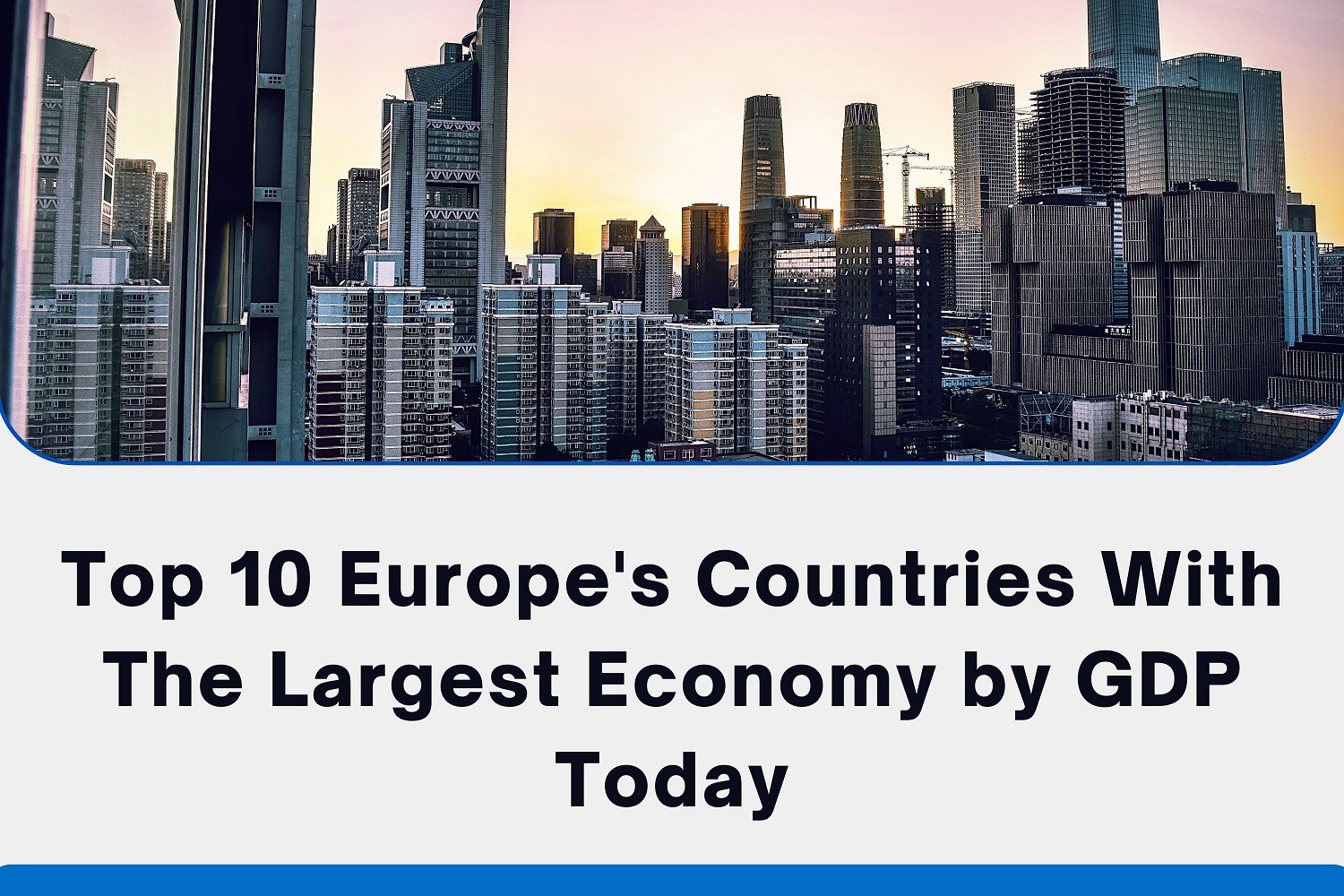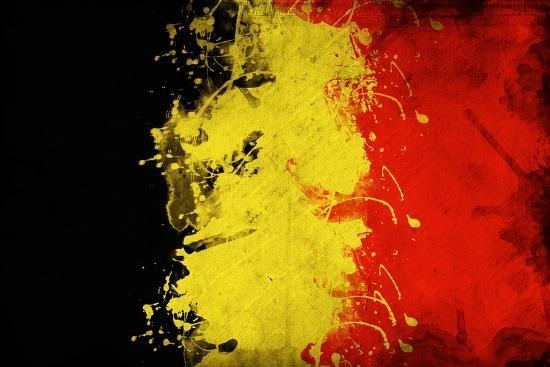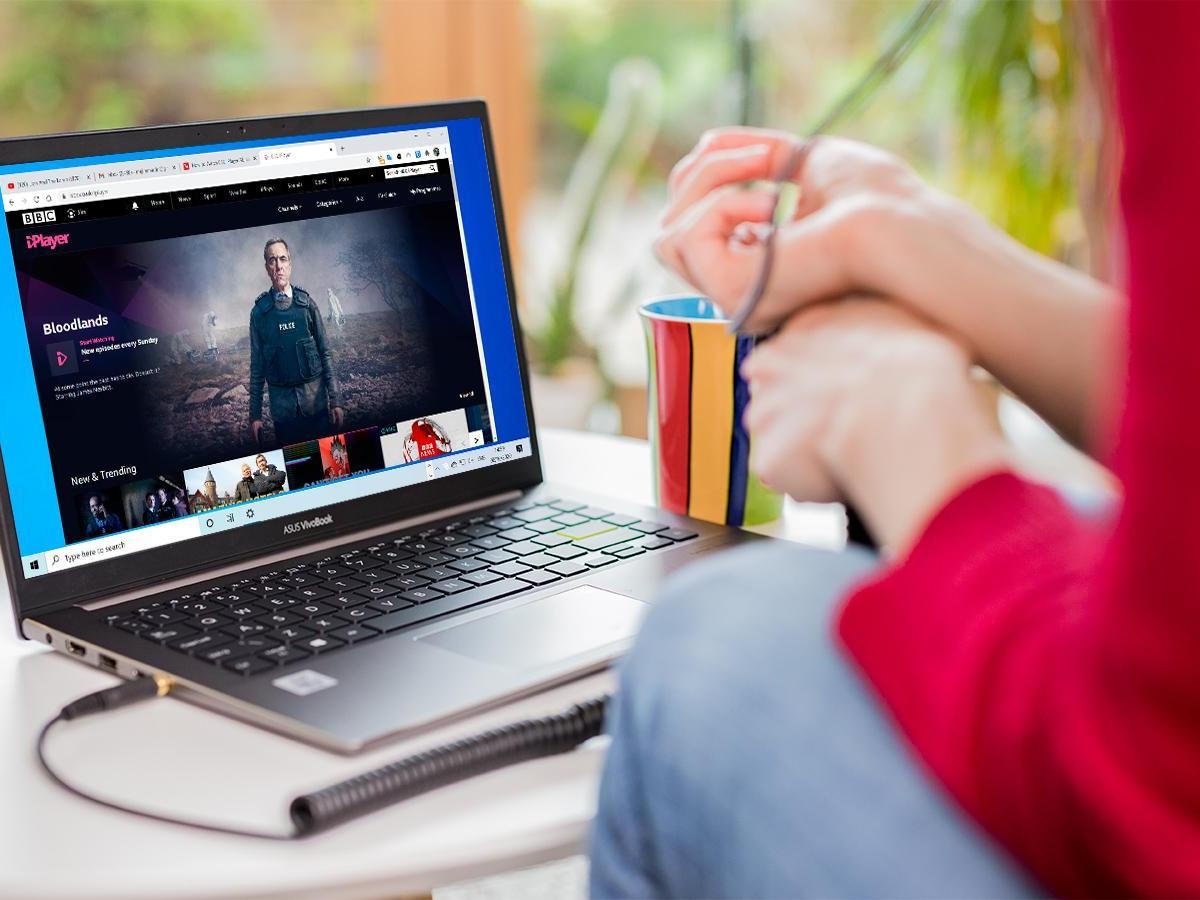What Is The Capital of Belgium: History, Facts, Best Places to See
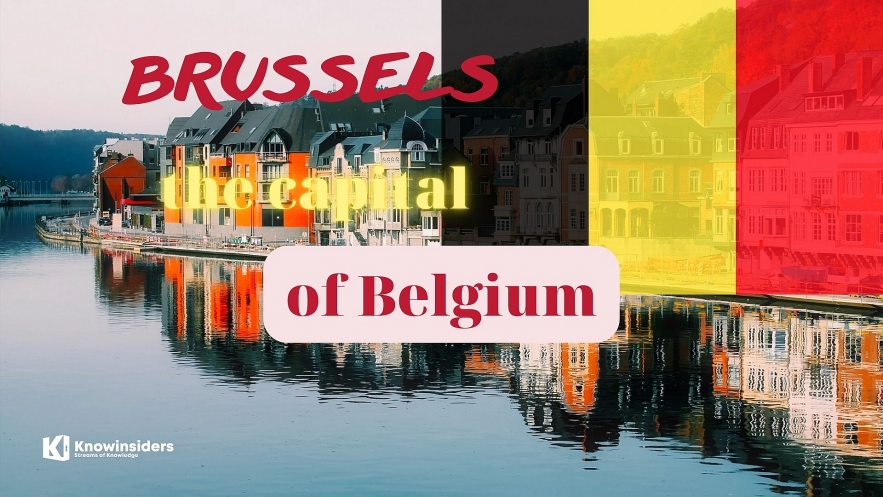 |
| What Is The Capital of Belgium: History, Best Places to See and Facts. Photo: knowinsiders. |
What is the Capital of Belgium?
The capital of Belgium, located on the Atlantic Ocean coast, is Brussels. It is located in Belgium, one of the three federal regions in Belgium. Located on the Senne River, at the intersection of two channels called Charleroi and Willebroek. Brussels, which is very close to Amsterdam, Paris and Luxembourg, has fast train connections to these cities.
How much do you know about Brussels? Let’s start with the basics, including history, best places to go and frequently asked questions and facts about the capital of Belgium.
*****
History of Brussels
According to Eupedia.com, Brussels was officially founded in 979, when a small castle was built near the Senne River. Lambert II of Leuven built a new castle and a city wall in the mid-11th century.
From the 12th century onwards, Brussels developed as an important stop on the commercial road from Bruges to Cologne.
Brussels was part of the Duchy of Brabant, which passed by marriage to the Dukes of Burgundy in 1406. Duchess Mary of Burgundy, who was born in Brussels. married Archduke Maximilian of Austria (afterwards the Holy Roman Emperor Maximilian I) in 1477, and Brussels passed to the Habsburgs.
When Emperor Charles V of Habsburg (1500-1558) abdicated, he left the Habsburgian Netherlands and Spain to his son Philip II. Brussels would from then on be ruled by the Habsburgs of Spain, then, from 1713, by the Habsburgs of Austria.
| Brussels, officially the Brussels-Capital Region, is located in Belgium and is comprised of 19 municipalities. Of these municipalities is the City of Brussels, which is the capital of Belgium. Along with Flanders and Wallonia, the City of Brussels is one of the three administrative regions within the country. The city is home to several international institutions, including some core institutions of the European Union, earning the informal nickname of the capital of the EU. Brussels is legally bilingual, with both Dutch and French recognized as official languages although 90% of the population speaks French. English is increasingly being spoken in Brussels, making it multilingual. |
A Grand Place
The Grand Place was referred to in 1147 as the ‘lower market.’ Situated close to the port on the Senne and along an important road, the marketplace did well as a bustling center for trade. But the buildings that make the Grand Place famous today were built (and rebuilt) much later.
The Town Hall came first, in the 15th century, as theculturetrip reported. With its beautiful flamboyant gothic design, 96 meter-high tower (315 feet) and detailed statues, it evidently must have been a costly project. It took about 18 years to complete the structure, and it has been renovated many times throughout history. This is why the building is not entirely symmetrical; if you look straight at the Town Hall, you’ll see that the tower doesn’t stand precisely in the middle.
The entire Grand Place was rebuilt after it was bombed by the army of Louis XIV in 1695. The bombardment happened during the Nine Years’ War, and although it did not influence the outcome of the war, it signaled the beginning of an age in which fortified city walls lost their significance. On the Grand Place, only the front of the Town Hall and some stone walls were left standing among the rubble. The rebuilding of Brussels happened quickly, however, and the marvelous results can still be seen today.
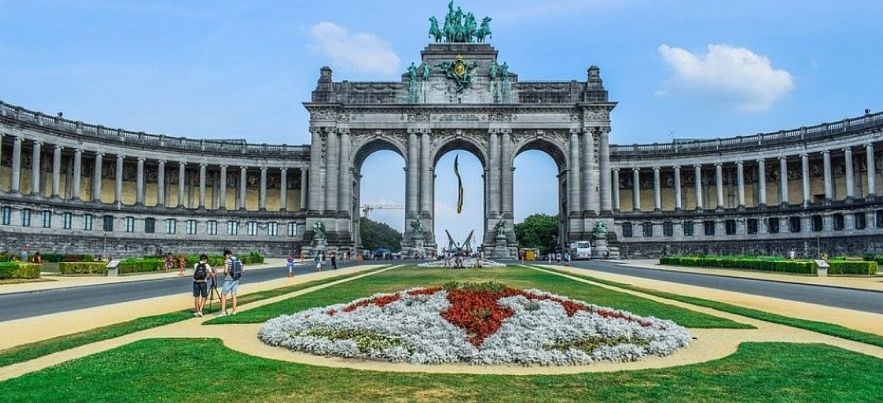 |
| What Is The Capital of Belgium: History, Best Places to See and Facts. Photo: brussels.com |
According to introducingbrussels.com, in 1789 the Belgians revolted against the Habsburg Emperor Joseph II and established the United Belgian States a year later. Less than ten years later, in 1795, the Napoleonic troops captured the city and annexed it to France until 1814.
In 1815 Napoleon was defeated in Waterloo and Brussels joined the United Kingdom of the Netherlands.
On 25 August 1830, the Belgian revolution took place in Brussels, which led to the country’s independence. The first king of the Belgians, Leopold I, was crowned in 1831 and the city was chosen capital of Belgium.
Brussels has grown throughout the centuries, except during World War I and II, when the German troops occupied the city. The city's importance is visible as it was chosen as the home of three World Fairs, the first in 1897, then in 1910 and lastly in 1958. During the last Expo, the Atomium was built, which has become along with the Manneken Pis, the two main symbols of Brussels.
Brussels is presently an extremely cosmopolitan city and is home to the European Parliament, the European Commission and the European Council. Moreover, it is also the seat of NATO and has become an arbiter between the irreconcilable Flanders and Wallonia.
| Brussels in the 20th century It is in Brussels that the Belgian comic strip was born. Hergé (1907-1983), author of the Adventures of Tintin, became the key figure of the Brussels school of comics in the 1930's. There are now hundreds of active comics writers and artists, generally based in Brussels or Charleroi, as well as a museum dedicated to the "ninth art", the Belgian Centre for Comic Strips. Brussels has been the capital of the European Community (then the European Union) since 1958, and the political seat of the North Atlantic Treaty Organisation (NATO) since 1967. Nowadays, thanks to its international status, Brussels enjoys the highest GDP per capita of any European administrative region after Luxembourg and central London. City Area Size and Population Density Brussels has a total area of 161.38 km2 (62.2 mi2) with a population density of 5,384 people per square kilometer (19,124 people per square mile). The estimated total population of Brussels is 2,065,284, with a growth rate of approximately 0.78%. Brussels Population Growth Brussels is currently growing at a rate of 0.78%. The population grew from 2,002,441 in 2015 to 2,065,284 in 2019, an increase of 62,843 people. By 2035, the population is projected to grow to 2,214,691 at a decreased growth rate of 0.30%. |
Best Places to See in Brussels
A trip to the capital wouldn't be complete without seeing the following attractions, as we summed up from planetware, :
Grand Place (Grote Markt)
Right in the heart of Brussels Old Town, the city's main plaza (known as Grand Place) is one of the best preserved in Europe.
Much of the square's elegant character is due to the unique architecture of its elegant Gildehuizen (guild houses) with their magnificent gables, pilasters, and balustrades, ornately carved stonework, and rich gold decoration.
Grand Place's defining character is its uniformity of Baroque style, with some Flemish influences. The harmony of its architecture is achieved by the short period of construction here, with most buildings raised between 1696 and 1700.
The history of the Grand Place dates back much earlier though. It was first established in the 11th century and evolved soon after, to become the political and economic center for the city.
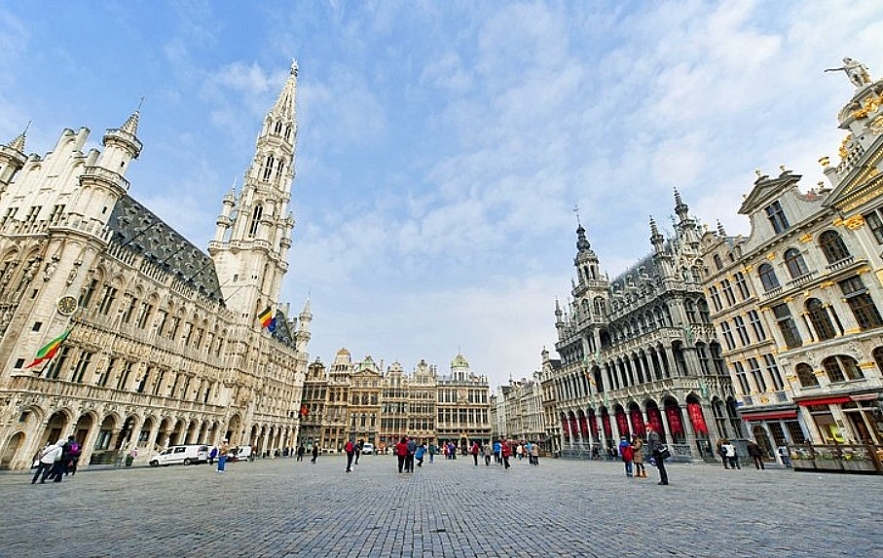 |
| Grand Place (Grote Markt). Photo: planetware.com. |
The most recognizable building on the square is the Hôtel de Ville (Town Hall), built in 1402 with the intention of upstaging the Stadhuis in the rival city of Bruges.
Inside are several magnificent rooms. Among the most impressive are the Maximilian Chamber, hung with Brussels tapestries; the large Council Chamber with a superb ceiling by Victor Janssens and tapestries to his designs; the great banqueting hall and the Marriage Chamber, both beautifully paneled; and the Escalier d'Honneur, with murals illustrating the history of Brussels.
Address: Grand Place, Central Brussels
Mannekin Pis
According to brussels.be, Manneken-Pis was at first a fountain that played an essential role in the former distribution of drinking water since the 15th century. The system was well-known in all of Europe.
Towards the end of the 17th century, the statue became more and more important in the city life. It was also a survivor of the bombardment of Brussels in 1695. Manneken-Pis became a precious good and enjoys a ceaselessly growing glory.
During big events, we adorn him with luxurious clothes. We know that in the 18th century, Manneken-Pis was dressed at least 4 times a year. Since he lost his main function in the network of water conveyance of the City in the 19th century, Manneken-Pis gradually became an image and symbol of the Brussels folklore, the joy of the inhabitants and their capacity of self-mockery.
The Gothic Cathedral of St. Michael and St. Gudula
This gothic style Roman Catholic Church is located on Treurenberg Hill and is a beautiful addition to the urban landscape of Brussels. In addition to the Grand Place, this is also one of the best places to visit in Brussels during Christmas as you can often find carolers and concerts here, as worldpackers.com reported.
It costs only €1 to enter the cathedral, and the opening hours are from 7:30 am to 6 pm on Mondays through Fridays, 7:30 am to 3:30 pm on Saturdays, and 2 pm to 6 pm on Sundays.
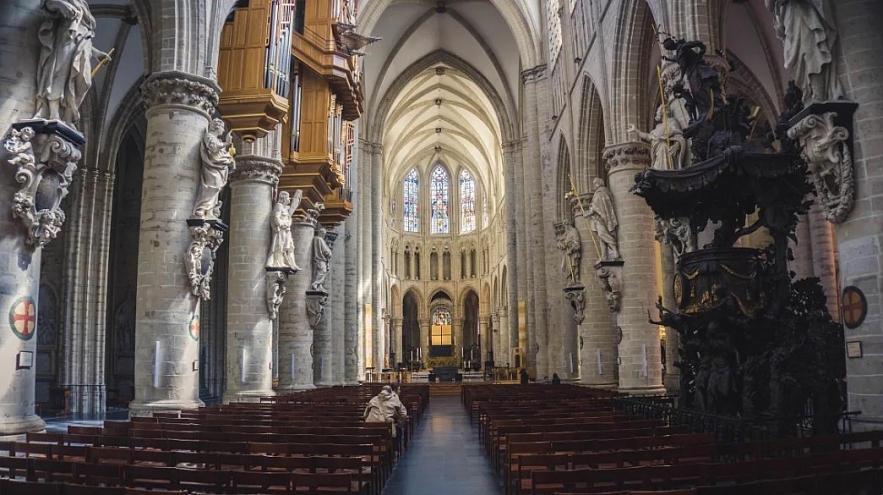 |
| The Gothic Cathedral of St. Michael and St. Gudula. Photo: worldpackers.com |
Atomium
Originally created for the Brussels World's Fair in 1958, Atomium is now a significant landmark and museum of the city. The massive iron spheres are meant to show the composition of an iron crystal, and the whole structure stands at 102 meters tall.
Designed by engineer André Waterkeyn, the landmark symbolizes the importance of science. To enter Atomium, it costs €12 and you can visit all but three of the spheres. Inside is an exhibition that changes from year to year.
The top sphere has a nice restaurant, aunt here are also event spaces inside for various happenings in Brussels. Atomium is open every day from 10 am to 6 pm.
Place Royale (Koningsplein)
A favorite attraction for photo-ops, the most important building on this square is the Royal Palace (Palais Royal), which is used by the Belgian royal family as an official residence.
The Belgian flag, flown from the roof, signals the sovereign's presence, and a ceremonial Changing of the Guard takes place every day at about 2:30pm.
From late July to late August, free guided tours of the palace's interior, taking in the grand reception rooms and halls, are available. Surrounding the palace are an ensemble of cultural buildings boasting Neoclassical facades.
The Palais des Académies, home of the Royal Academy of Sciences and once the residence of the Crown Prince of Orange, and the Palais des Beaux-Arts (Paleis voor Schone Kunste) on the west side of the plaza, designed and built in the 1920s by Victor Horta, are two of the finest examples.
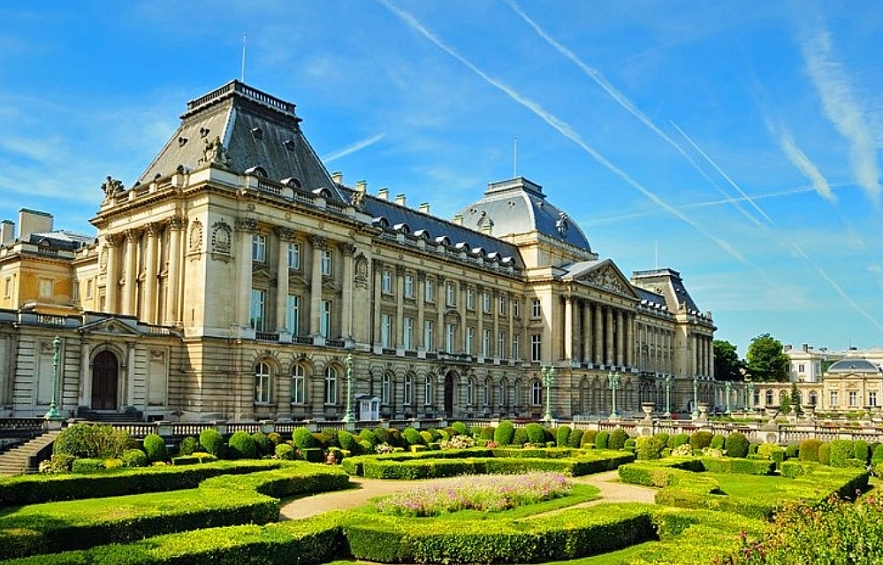 |
| Place Royale (Koningsplein). Photo: planetware.com. |
Mont des Arts
Cats may have nine lines, but the Mont des Arts, a hill in the center of Brussels, is giving them a run for the money. Once a densely populated neighborhood, the buildings were torn down; the land lay vacant for many years. Then a garden was put in but it, too, was torn down to make way for buildings, which include the Royal Library and Congress Palace. A new garden shares space with the buildings today. Visitors to the “hill of the arts” will find some of the best views of Brussels from here, with the Town Hall spires reaching up into the sky, touropia.com reported.
Town Hall
While many cities rush to build modern town halls, the City of Brussels is sticking with its early 15th century Gothic town hall. It is the last remaining medieval building on the Grand Place. Of course, there’s a newer addition, but it’s not as interesting. The old town hall is decorated with 137 statues of important people, like nobles and saints, in the city’s history. Visitors will only see copies there, as the originals are in the nearby city museum. The building is topped with an elegant spire that itself is topped with a 5-meter (16-foot) high statue of the archangel Michael.
Musical Instrument Museum
The Musical Instrument Museum is a must-visit for anyone who plays a musical instrument or just plain loves music. The museum houses more than 1,100 musical instruments, ranging from ancient to modern. Considered one of the top musical instrument museums in the world, the museum also houses a concert hall in its uniquely designed Art Noveau and Neoclassical building. Exhibits feature keyboards, types of music from medieval to the 19th century, and mechanical and electronic instruments. The most popular gallery features traditional musical instruments from around the world. Here, visitors may be surprised to learn the Scots weren’t the only ones who played bagpipes.
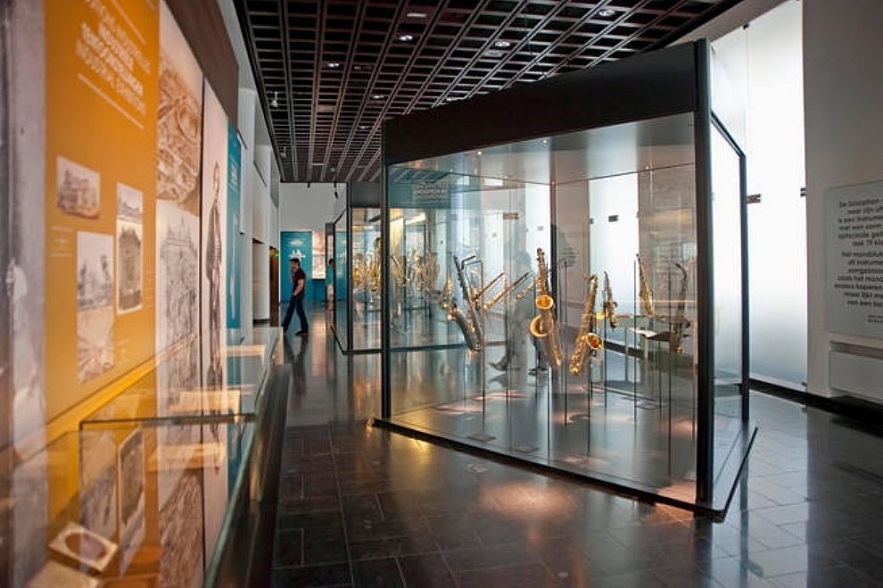 |
| Musical Instrument Museum - Brussels, Belgium. Picture: Alamy |
Interesting Facts about Brussels
Brussels, the capital city of Belgium, is well-known for many things – politics, history, architecture, and cuisine just to name a few. It is easy to be captivated by this relatively small city because of its rich culture and charm.
The heart of Europe
According to theculturetrip, deemed as the de facto capital of Europe, the EU institutions — the European Commission, the European Council, Council of the European Union and European Parliament — all call Brussels home. It is also worth noting that NATO’s headquarters and other international missions are represented within the capital. While visitors can tour each of these institutions, another way to get the full experience is to head out to Place Luxembourg on a Thursday night, and become immersed in the hustle and bustle that is the European Quarter.
Record-breaking churches
Although Belgium has its fair share of beautiful churches, the Basilica of the Sacred Heart, (otherwise known as the Koekelberg Basilica), is particularly special. Not only is it the third biggest cathedral in Belgium, but it ranks as fifth in the list of the world’s largest churches and is the largest Art Deco-style building in the world. The Basilica was constructed at the end of 19th century and was originally intended to represent a ‘Royal Disctrict’ at the plateau of Koekelberg. Visitors can head up to the cupola to get an extraordinary panoramic view of Brussels — and don’t forget to check out the two museums housed inside.
Significant monuments
While Brussels is known for its more quirky and alternative selection of monuments, there are others definitely worth visiting in the city, including the historic Pro Patria Monument. Located in the middle of the Place des Martyrs, the crypt serves as a memorial dedicated to honoring the 466 individuals who lost their lives while fighting for Belgium’s independence.
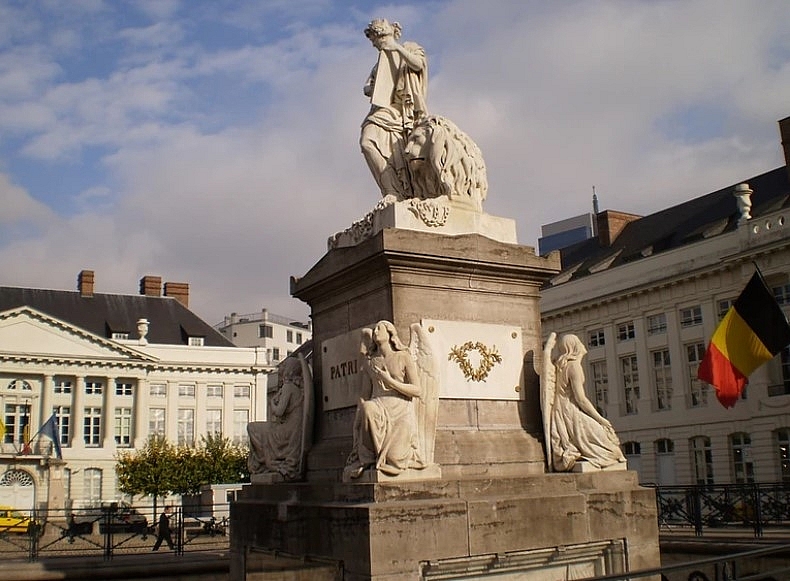 |
| Monument, Martyrs’ Square – Place des Martyrs | © Dr Les (Leszek – Leslie) Sachs/Flickr |
Brussels sprouts really do come from Brussels
According to bigseventravel.com, researchers traced the history of the small green vegetable back to the 13th-century in the Brussels area. However, it wasn’t until the 18th-century that the French coined the name choux de Bruxelles – cabbage of Brussels. Researchers believe Brussel sprouts to be descendants of wild Mediterranean kale.
Brussels is home to the largest chocolate outlet in the world
Belgian chocolate is famous the world over, so it is no surprise that Brussels Airport is the largest chocolate outlet in the world. Residents and tourists buy roughly 1.5 kg of chocolate per minute, which is about 2 tonnes per day and more than 800 tonnes per year. At the airport, you’ll find the Belgian Chocolate House, where you can stock up on the finest brands of Belgian chocolate, for instance, Neuhaus, Godiva, Leonidas, Corné Port-Royal and Marcolini, as well as most popular brands like Galler, Dandoy, Destrooper, Starbrook and Guylian.
Brussels has 138 restaurants per square mile
Brussels is a terrific city for food lovers as it has a wide range and a huge amount of restaurants from which to choose. Being such a multicultural city, this is reflected in the diverse restaurant scene. You can eat all kinds of international cuisines. However, if you want to keep it local, make sure you try moules frites (mussels and fries), praline chocolates and Boulets à la Liégeoise (meatballs). Don’t miss the hot gaufre (waffles) covered in syrup and cones of frites (fries) covered in mayonnaise.
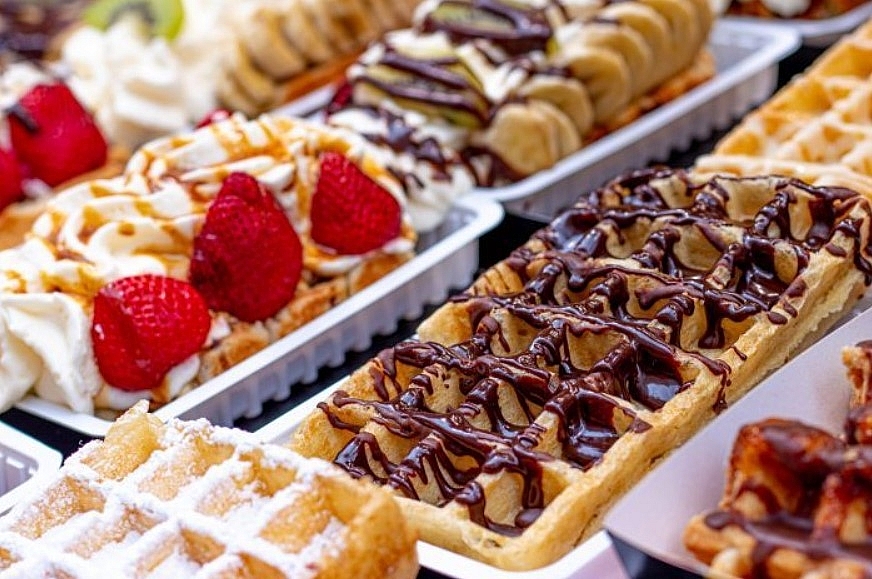 |
| Photo: bigseventravel.com |
Brussels has one of the world’s deepest swimming pools
Some 35 metres deep, the Nemo 33 in Brussels was, when it opened in May 2004, the deepest swimming pool in the world. The Y-40 pool in Italy took this title when it opened in 2014. Today, the Nemo 33 pool in Brussels is the fourth-deepest swimming pool in the world. The Neno 33 is a practice ground for scuba divers and features lots of simulated underwater caves that the divers can explore.
Tourism adds massively to the economy
In recent years tourism in Brussels has expanded massively. 4.2 million tourists visited the city in 2019 alone. Many visit purely to pass through to visit other areas, while others are keen to explore the culture. Brussels’ own publicity proudly states there’s ‘something for everyone’ here!
| Frequently Asked Questions about Belgium Do I need to get a visa? A valid passport for 6 months beyond your return date is required to enter Belgium and at least one page for stamps. Jacadatravel.com recommend you check whether you require a visa for the countries you are visiting AND flying through (in-transit). US, Canadian, Hong Kongese, Singaporean Australian and New Zealand are among those who may enter Belgium as tourists without a visa and stay up to 90 days. EU passport holders can come and go as they please. Those travelling with passports from Thailand, Indonesia and Malaysia will require a visa and should contact their closest Belgian Embassy or Consulate. A useful website for checking whether you require a visa is visahq.com however we strongly advise you consult the details with the relevant embassies which will be able to give you the exact detail, and that you do this at least 2 months prior to your trip. What electrical plugs are used? Electricity supply in Belgium is AC 220 volts, 50 Hertz. Sockets meet European regulations and use the round pin system. However, most hotels have adaptors for different plugs. What is transport like in Belgium? If you are staying in the city centre, most tourist destinations are accessible by foot. For some attractions located a little further, public transport inside the city (metro, tram, bus) is fast, frequent and efficient. Hotels can assist you with catching taxis, which remain cheap due to the short distances between attractions. What is the weather like in Belgium? Brussels enjoys a relatively temperate maritime climate with cool summers and mild winters, making it an ideal city-break destination all year round. We strongly recommend a constant review of the weather forecast. |
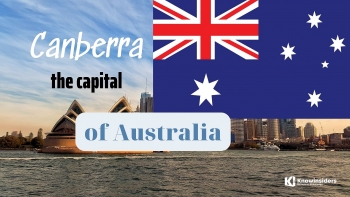 What Is The Capital of Australia: History, Best Places to See and Facts What Is The Capital of Australia: History, Best Places to See and Facts Australia is one of those funny countries with a capital city that is not very well known or densely populated. We rounded up all things ... |
 What Is the Capital of Canada: History, Best Places to See and Facts What Is the Capital of Canada: History, Best Places to See and Facts Canada is a hugely respected country by the rest of the world. It is seen as a place of culture, tolerance and natural beauty. We ... |
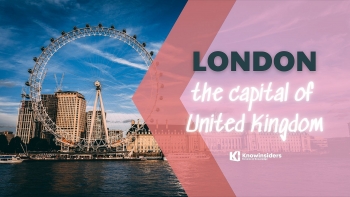 What Is The Capital of U.K: History, Best Places to See and Facts What Is The Capital of U.K: History, Best Places to See and Facts The United Kingdom, also called the U.K., consists of a group of islands off the northwest coast of Europe. We rounded up all things you ... |

